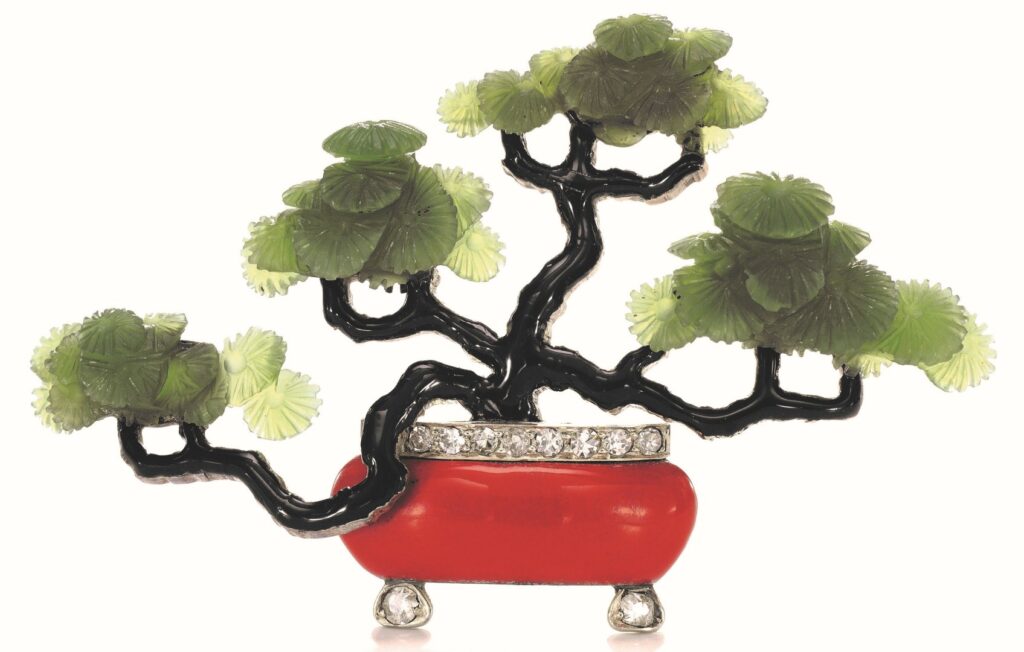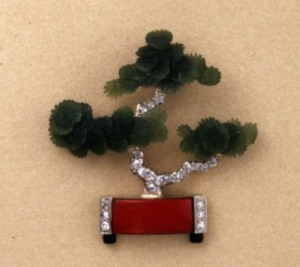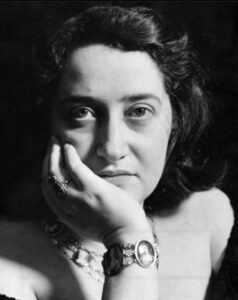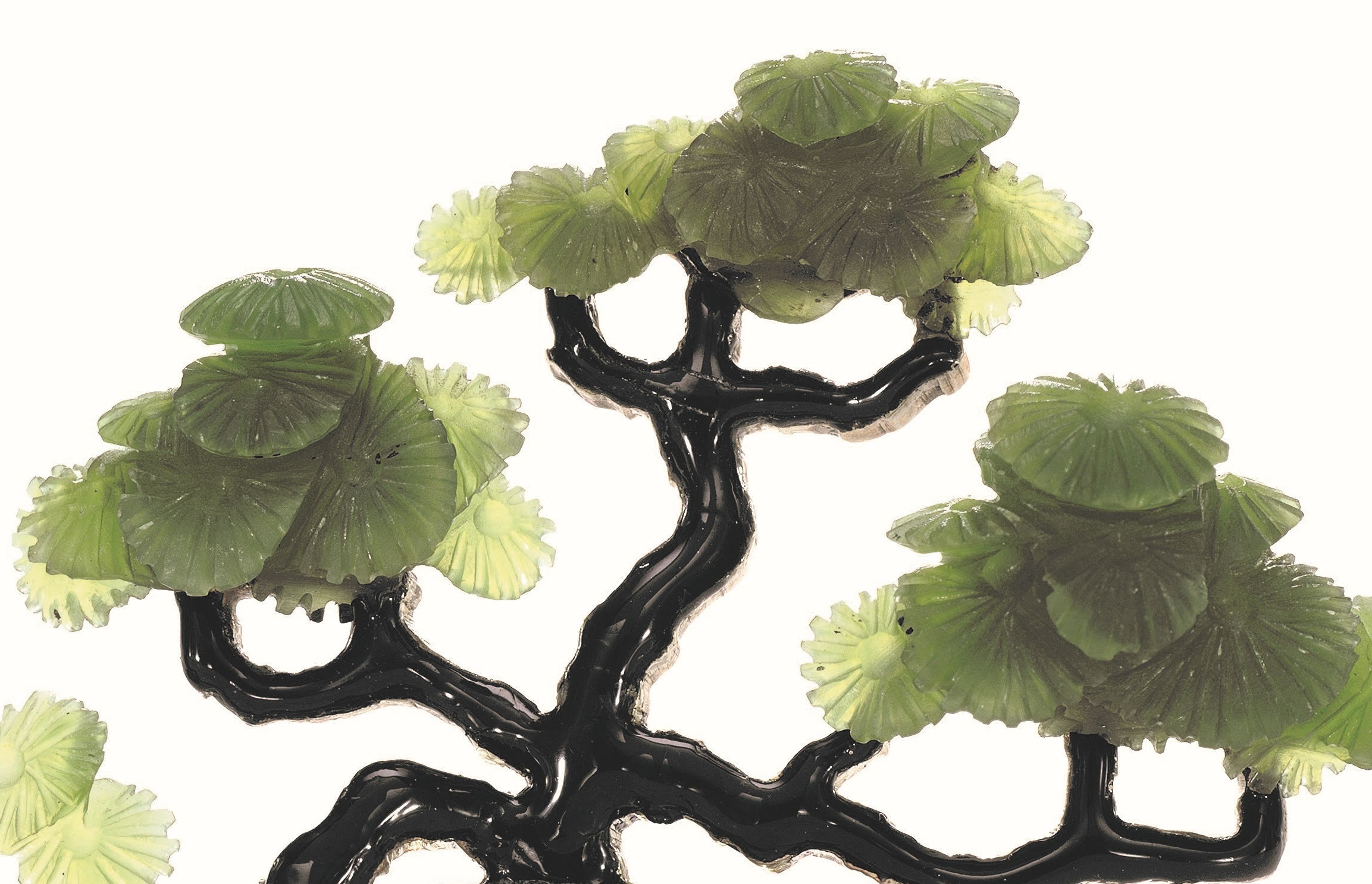Paltscho’s Art Deco enamel, nephrite and diamond bonsai tree
Art Deco continues to intrigue and weave its magic, although it is now over 100 years since the end of World War I when the machine age took hold with a driving energy and the movement found expression in its use of motifs from cultures all over the world. This enamel, nephrite and diamond bonsai tree brooch, by the Austrian jewellery house, Paltscho, circa 1925 – at auction this month – is an intriguing piece for exploration.

In the 1920s jewellery designers sought to reduce the traditional dominance of diamonds in their creations, which is not to say that they did away with them altogether, rather, they introduced colourful gemstones such as emeralds, rubies and sapphires, combined with an increased emphasis on elegant, elaborate settings utilising less expensive materials such as enamel, glass, rock crystal, horn and ivory. Diamonds were seen in unique cuts, notably rods and matchsticks, and dark materials such as black onyx and enamel were selected for their contrast with the sparkle of diamonds. Leaves, fruit and foliage – richly coloured and with harmonious structures – provided the perfect motifs for this new combination of precious stones and fine materials. Items from Japanese lifestyle and culture were also popular, and, as seen here, carved nephrite effortlessly captures the delicate clusters of foliage in the highly-stylised bonsai, with bold red enamel assuming the bonsai’s shiny ceramic pot.

A similar bonsai tree brooch by Paltscho, circa 1920, is to be found in the collection of the British Museum, one of over 1,000 items of jewellery in the Hull Grundy gift, donated to the Museum in 1978 by Anne and John Hull Grundy. Anne Hull Grundy (1926-1984) was one of the 20th century’s most significant jewellery collectors, born into a wealthy Jewish banking family, she created one of the most important post-war collections of 19th century jewels. Anne, and her husband, Professor John Hull Grundy, were also interested in the arts of Japan, notably jizai – articulated animal sculptures, and netsuke – carved ornaments worn with the kimono. Given the couple’s favoured aesthetics and their love of jewellery, the presence of Paltscho’s bonsai brooch in their collection makes absolute sense.

As for the jewellery house of Paltscho, the name is not now widely known, at least not outside a circle of devoted collectors. In 1881 Ernst Palscho (1858-1929) joined the business created by his father, Carl, in Mariahilfstrasse – Vienna’s largest shopping thoroughfare. From 1922 Paltscho Jewellers were based on Am Graben, with Ernst’s son, Erwin, running the business after his father’s death, in 1929, until the end of the 1960s. Paltscho produced high-quality jewellery, akin to works of art, and in particular flower brooches in rock crystal, roze quartz, amethyst and agate. The Paltscho legacy might just be their well-crafted, hidden clasps, copied by many jewellers, notably Hermès. Erwin’s designs are also now regarded as the ‘seed’ for later creations by Van Cleef & Arpels, amongst others; he was not a well-known figure but Paltscho received commissions for unique pieces from clients based around the world.
